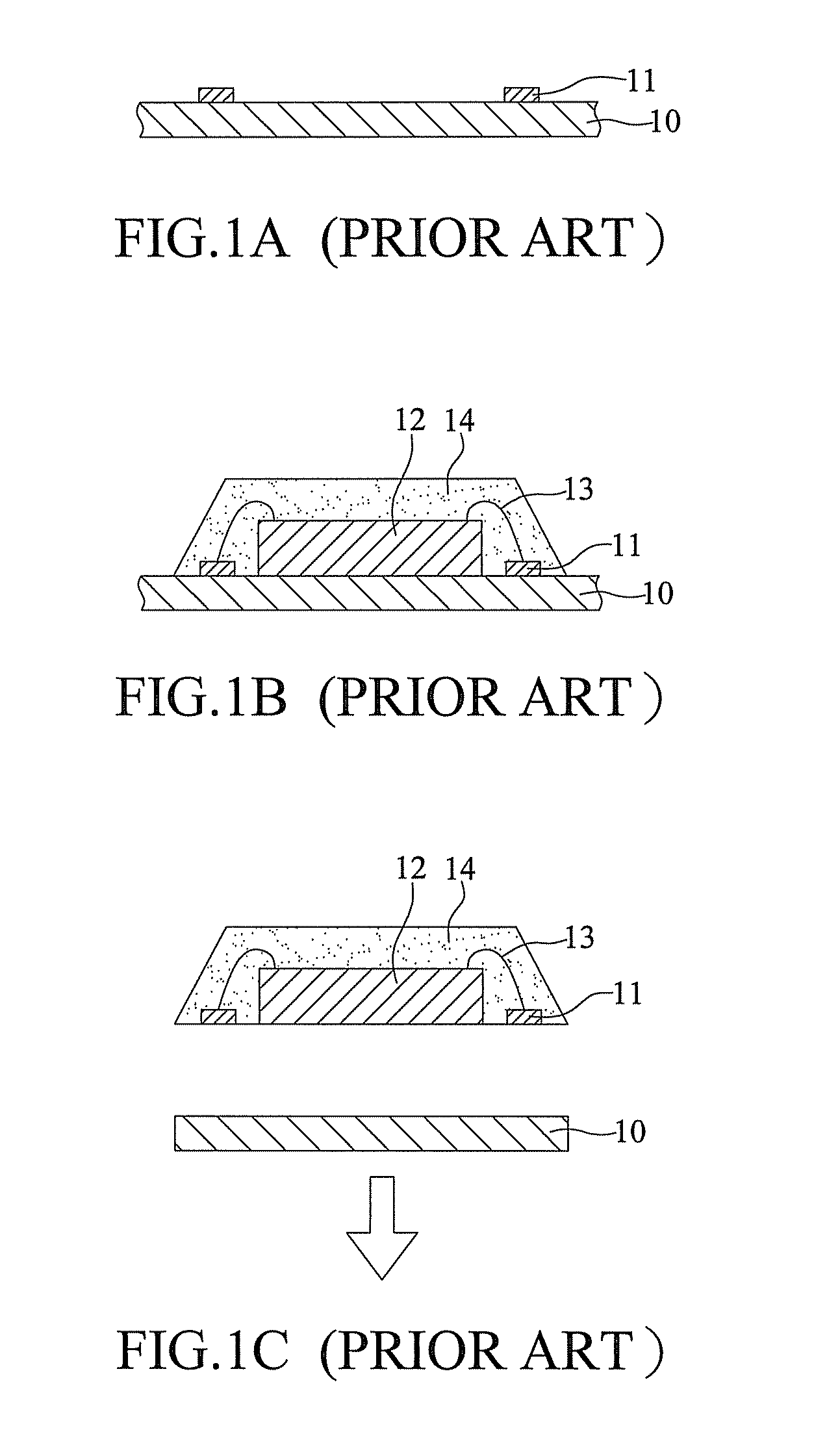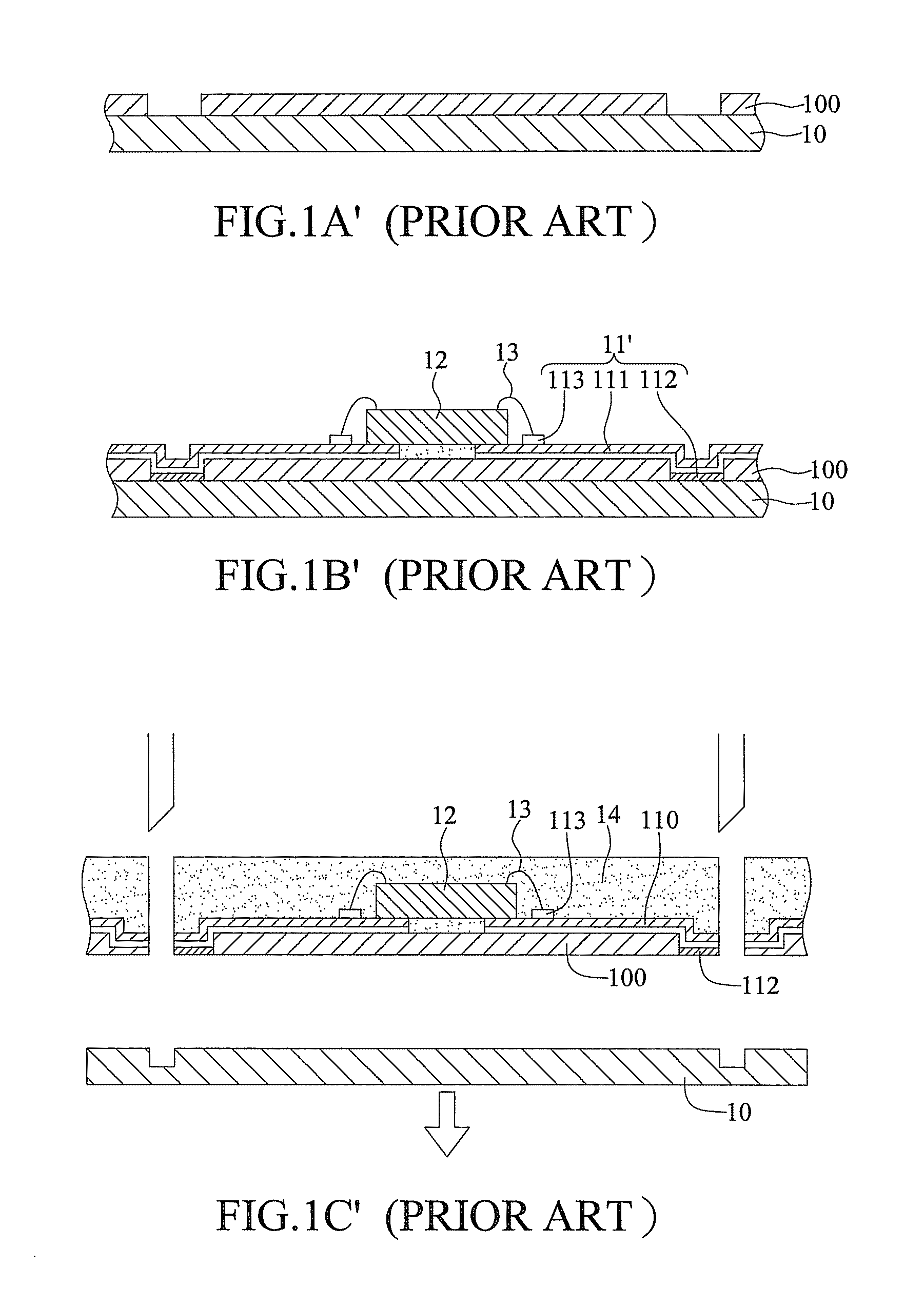Package structure fabrication method
- Summary
- Abstract
- Description
- Claims
- Application Information
AI Technical Summary
Benefits of technology
Problems solved by technology
Method used
Image
Examples
first embodiment
[0030]FIGS. 2A to 2H are schematic views showing a fabrication method of a package structure according to a first embodiment of the present invention. For the purpose of brevity, only one package unit is shown in the drawings. But it should be noted that the present invention is not limited thereto. For example, a plurality of package units arranged in array are provided in practice
[0031]Referring to FIG. 2A, a metal plate 20 having a first surface 20a and an opposed second surface 20b is provided, and at least an active region A is defined on the metal plate 20. Then, a resist layer 200 such as photo resist is formed on the first and second surfaces 20a, 20b, and a plurality of patterned open areas 200a is formed in the resist layer 200 for exposing portions of the first and second surfaces 20a, 20b of the metal plate 20. Further, a patterned metal layer 201 is formed in the open areas 200a by electroplating, wherein the metal layer 201 on the first surface 20a inside the active re...
second embodiment
[0042]FIGS. 3A to 3F are sectional views showing a fabrication method of a package structure according to a second embodiment of the present invention. The second embodiment differs from the first embodiment in that the conductive posts 36 in the second embodiment are formed for facilitating a stacking process.
[0043]Referring to FIG. 3A, a metal plate 30 with a structure as shown in FIG. 2C is provided, and a plurality of third electrical contact pads 301 corresponding in position to the first electrical contact pads 312 is formed on the second surface 30b in the active region A.
[0044]Referring to FIG. 3B, the metal plate 30 is etched from the second surface 30b in the active region A along the inner edges of an anti-etching structure 314 and edges of the third electrical contact pads 301 so as to form an open area 302 to penetrate the metal plate 30, and in consequence the die pad 310, wiring layers 311 and bond fingers 313 are exposed from the open area 302. Therein, the portions ...
PUM
| Property | Measurement | Unit |
|---|---|---|
| Electrical conductor | aaaaa | aaaaa |
| Area | aaaaa | aaaaa |
Abstract
Description
Claims
Application Information
 Login to View More
Login to View More - R&D
- Intellectual Property
- Life Sciences
- Materials
- Tech Scout
- Unparalleled Data Quality
- Higher Quality Content
- 60% Fewer Hallucinations
Browse by: Latest US Patents, China's latest patents, Technical Efficacy Thesaurus, Application Domain, Technology Topic, Popular Technical Reports.
© 2025 PatSnap. All rights reserved.Legal|Privacy policy|Modern Slavery Act Transparency Statement|Sitemap|About US| Contact US: help@patsnap.com



